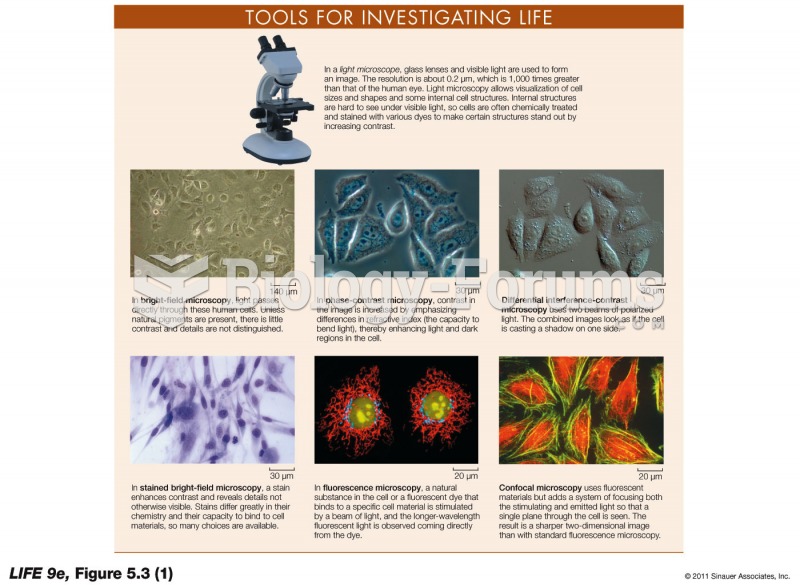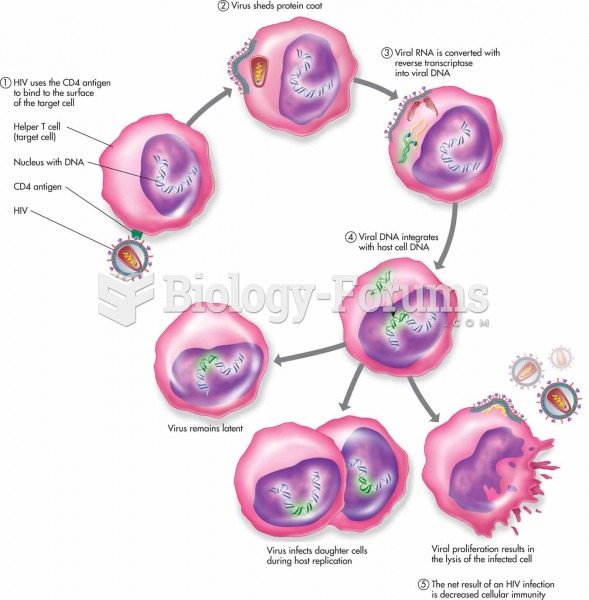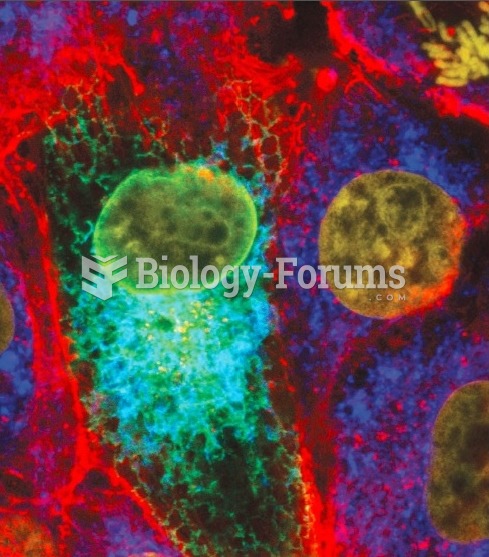This topic contains a solution. Click here to go to the answer
|
|
|
Did you know?
In Eastern Europe and Russia, interferon is administered intranasally in varied doses for the common cold and influenza. It is claimed that this treatment can lower the risk of infection by as much as 60–70%.
Did you know?
Medication errors are more common among seriously ill patients than with those with minor conditions.
Did you know?
Warfarin was developed as a consequence of the study of a strange bleeding disorder that suddenly occurred in cattle on the northern prairies of the United States in the early 1900s.
Did you know?
There are more nerve cells in one human brain than there are stars in the Milky Way.
Did you know?
The average office desk has 400 times more bacteria on it than a toilet.







